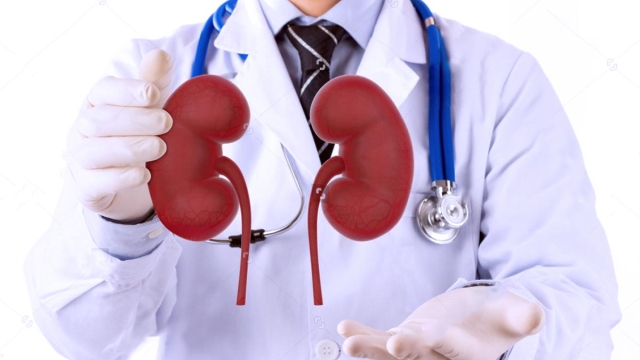Welcome to the intriguing world of urology, where the secrets of the urinary system are decoded! Urology, the branch of medicine dedicated to the study and treatment of disorders and diseases related to the urinary tract, plays a vital role in maintaining our overall health and well-being. From the kidneys to the bladder, from the ureters to the urethra, the complexities of this intricate system can sometimes leave us with more questions than answers.
In this comprehensive guide, we will delve into the fascinating field of urology, exploring the mysteries behind its inner workings and shedding light on some of the most common conditions that affect it. Whether you’re experiencing urinary tract infections, kidney stones, bladder issues, or even more complex conditions like urinary incontinence or prostate problems, understanding the science and art of urology can provide much-needed clarity and peace of mind. So, let’s embark on this enlightening journey together, as we uncover the secrets and unlock the knowledge that urology holds.
Common Urological Conditions
In the field of urology, there are several common conditions that individuals may encounter. These conditions can range from minor irritations to more serious health concerns. It is essential to have a basic understanding of these conditions to promote early detection and proper management. Here are three commonly encountered urological conditions:
Urinary Tract Infections (UTIs):
UTIs occur when bacteria enter the urinary tract, leading to an infection. Symptoms may include a frequent urge to urinate, a burning sensation during urination, cloudy or bloody urine, and pelvic pain. While UTIs primarily affect women, they can also occur in men. Treatment generally involves antibiotics to clear the infection and drinking plenty of fluids to help flush out the bacteria.Kidney Stones:
Kidney stones are hard deposits that form in the kidneys and can cause severe pain when they pass through the urinary tract. Common symptoms include intense back or abdominal pain, blood in the urine, and frequent urination. Treatment options vary depending on the size and location of the stone, but may include medication, increased fluid intake, or procedures to remove or break up the stones.Benign Prostatic Hyperplasia (BPH):
BPH is a non-cancerous enlargement of the prostate gland that commonly affects older men. It can lead to urinary symptoms such as frequent urination, weak urine flow, difficulty starting or stopping urination, and the feeling of incomplete bladder emptying. Treatment options for BPH range from medication to surgery, depending on the severity of symptoms and their impact on daily life.
Urologist In Amman
By being aware of these common urological conditions, individuals can take appropriate steps to seek medical attention if they experience any related symptoms. Early diagnosis and proper management can help improve overall urological health and prevent complications.
Diagnostic methods in Urology
Urology, the specialized field of medicine focusing on the urinary system, utilizes various diagnostic methods to identify and treat urological conditions. These diagnostic techniques play a crucial role in assessing the urinary system and helping urologists determine the most appropriate course of action for their patients.
- Medical History and Physical Examination

The initial step in diagnosing urological disorders involves obtaining a detailed medical history from patients, followed by a comprehensive physical examination. This allows urologists to gather information about the patient’s symptoms, previous medical conditions, and any relevant family history. Additionally, a physical examination helps identify any visible signs or abnormalities that may aid in the diagnosis.
- Urinalysis and Urine Culture
Urinalysis is a common diagnostic tool used in urology to evaluate the composition and characteristics of urine. The test examines the urine for the presence of blood, bacteria, chemical substances, or other abnormalities that could indicate an underlying urological condition. In some cases, a urine culture may also be performed to identify the type of bacteria causing a urinary tract infection, aiding in the selection of appropriate antibiotics for treatment.
- Imaging Studies
Imaging studies are crucial in providing visual insights into the urinary system. Techniques such as ultrasound, X-ray, computed tomography (CT) scan, and magnetic resonance imaging (MRI) can be employed to examine the organs, tissues, and structures within the urinary system. These imaging techniques help in the diagnosis and evaluation of various conditions, including kidney stones, tumors, urinary tract obstructions, and structural abnormalities.
By utilizing a combination of medical history, physical examination, urinalysis, urine culture, and imaging studies, urologists can determine the underlying cause of a patient’s urological symptoms. These diagnostic methods assist in formulating appropriate treatment plans and ensuring optimal patient care.
Treatment options in Urology
In the field of urology, there are various treatment options available to address different conditions. These treatments aim to improve urinary and reproductive health, enhancing overall well-being and quality of life for patients.
One common treatment option in urology is medication. Medications can be prescribed to manage a range of urological conditions, such as urinary tract infections, bladder control issues, or hormonal imbalances. These medications may help alleviate symptoms and restore normal functioning in the urinary system.
Another treatment option in urology is minimally invasive procedures. These procedures utilize advanced techniques and tools to treat urological conditions while minimizing the need for extensive surgery. For example, minimally invasive procedures, such as laser treatments or laparoscopic surgeries, may be used to remove kidney stones or repair urinary tract obstructions.
Surgical interventions are also employed in urology when necessary. Surgical procedures can be performed to address conditions like prostate enlargement, bladder tumors, or urinary incontinence. Urological surgeries are designed to correct anatomical abnormalities, remove diseased tissues, or restore normal function to the urinary system.
By combining these treatment options, urologists can provide comprehensive care to patients with diverse urological conditions. The choice of treatment depends on the specific diagnosis, severity of the condition, and individual patient factors. Consulting with a urologist is essential to determine the most appropriate treatment plan tailored to each patient’s needs and overall health.






Recent Comments